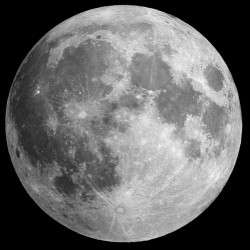
European and Russian space agencies are to send a lander to an unexplored area at the Moon’s south pole. It will be one of a series of missions that prepares for the return of humans to the surface and a possible settlement. The spacecraft will assess whether there is water and materials to make fuel and oxygen.
BBC News has obtained exclusive details of the mission, called Luna 27, which is set for launch in five years’ time. The mission is one of a series led by the Russian federal space agency, Roscosmos, to go back to the Moon. These ventures will continue where the exploration programme that was halted by the Soviet Union in the mid 1970s left off, according to Prof Igor Mitrofanov, of the Space Research Institute in Moscow, who is one of the lead scientists.
"We have to go to the Moon. The 21st Century will be the century when it will be the permanent outpost of human civilisation, and our country has to participate in this process," he told BBC News. But unlike efforts in the 1960s and 70s, when the Soviet Union was working in competition with the US and other nations, he added, "we have to work together with our international colleagues".
Bérengère Houdou, who is the head of the lunar exploration group of at Esa’s European Space Research and Technology Centre (Estec), just outside Amsterdam, has a similar strategy. "We have an ambition to have European astronauts on the Moon. There are currently discussions at international level going on for broad cooperation on how to go back to the Moon."
One of the first acts of the new head of the European Space Agency, Johann-Dietrich Wörner, was to state that he wants international partners to build a base on the Moon’s far side. The initial missions will be robotic. Luna 27 will land on the edge of the South Pole Aitken (SPA) basin. The south polar region has areas which are always dark. These are some of the coldest places in the Solar System. As such, they are icy prisons for water and other chemicals that have been shielded from heating by the Sun.
According to Dr James Carpenter, Esa’s lead scientist on the project, one of the main aims is to investigate the potential use of this water as a resource for the future, and to find out what it can tell us about the origins of life in the inner Solar System. "The south pole of the Moon is unlike anywhere we have been before," he said.
"The environment is completely different, and due to the extreme cold there you could find large amounts of water-ice and other chemistry which is on the surface, and which we could access and use as rocket fuel or in life-support systems to support future human missions we think will go to these locations."
